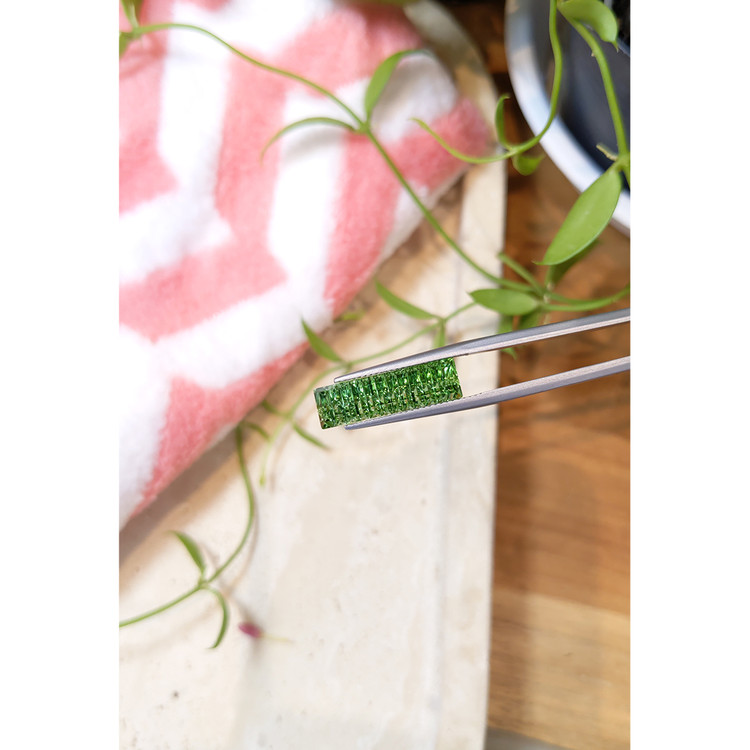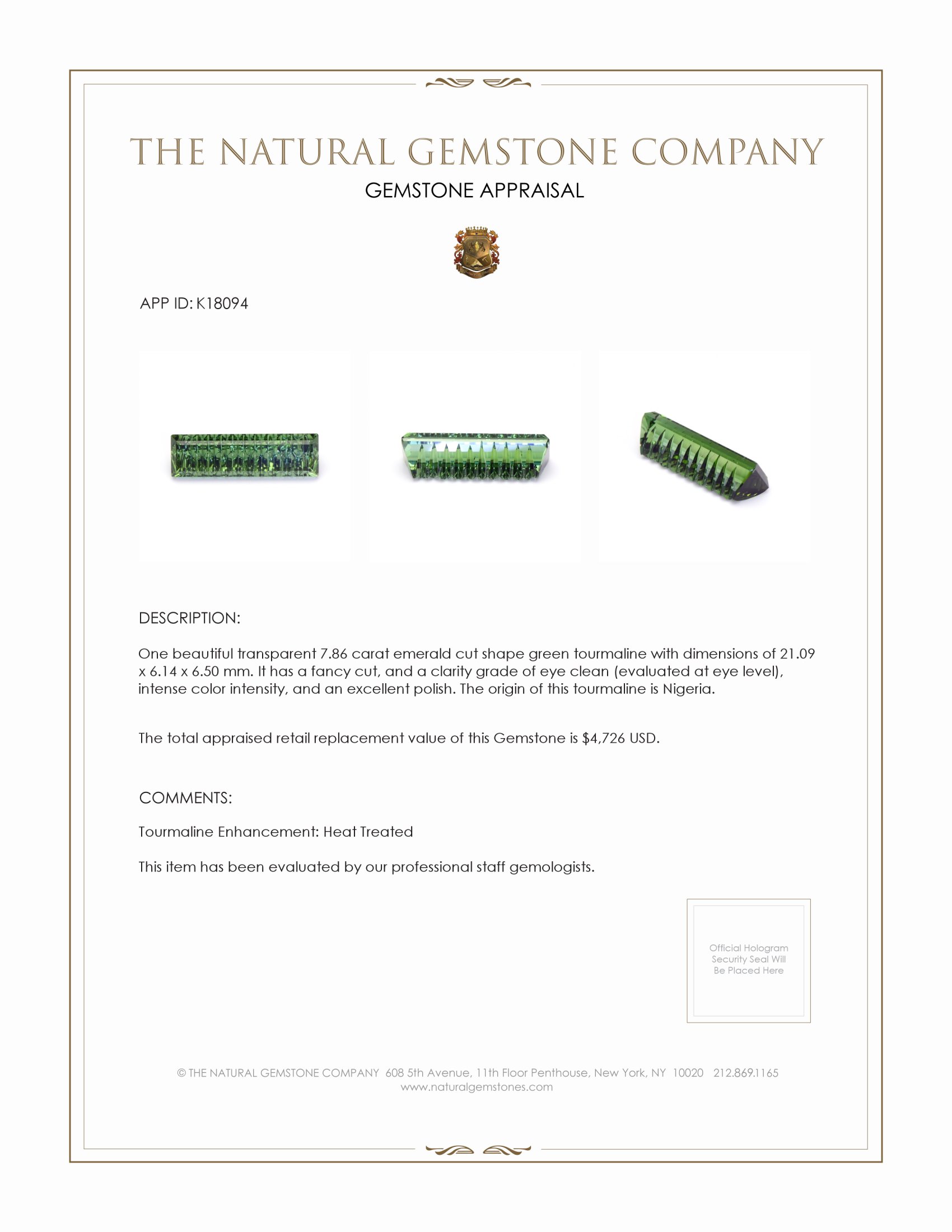- Stone13
- Reports3
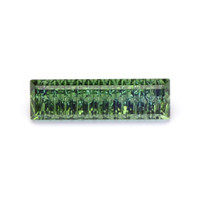




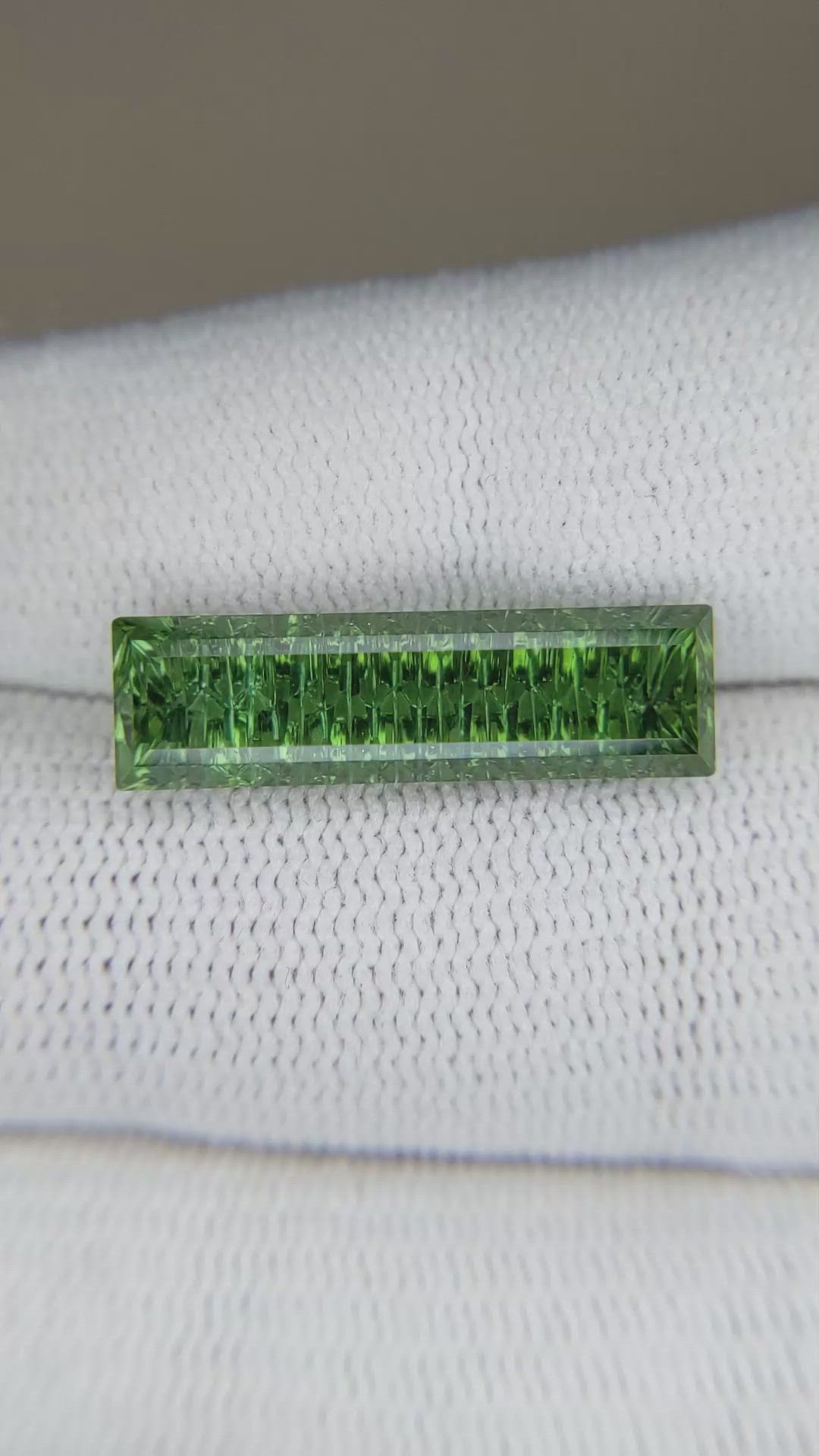
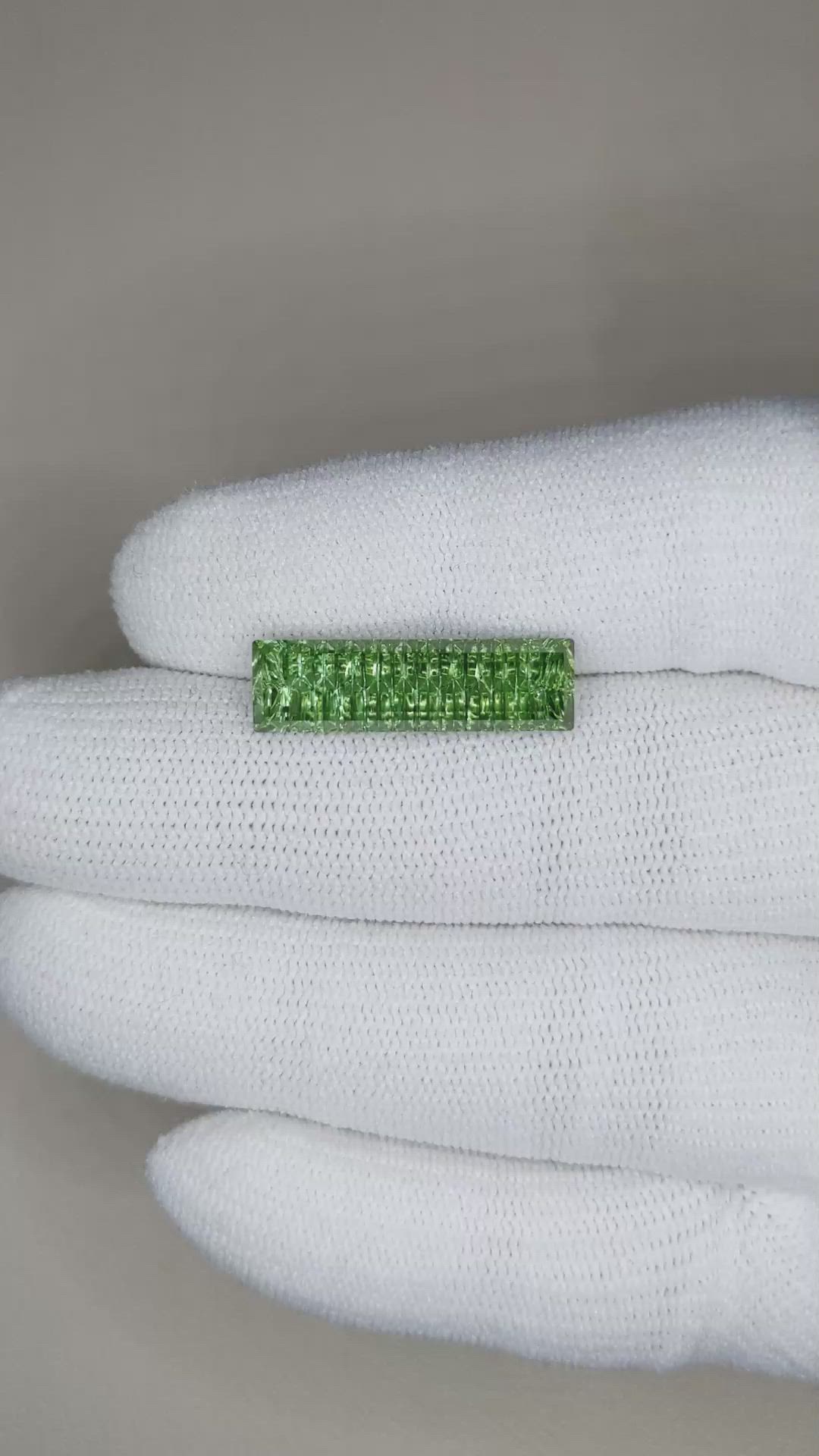

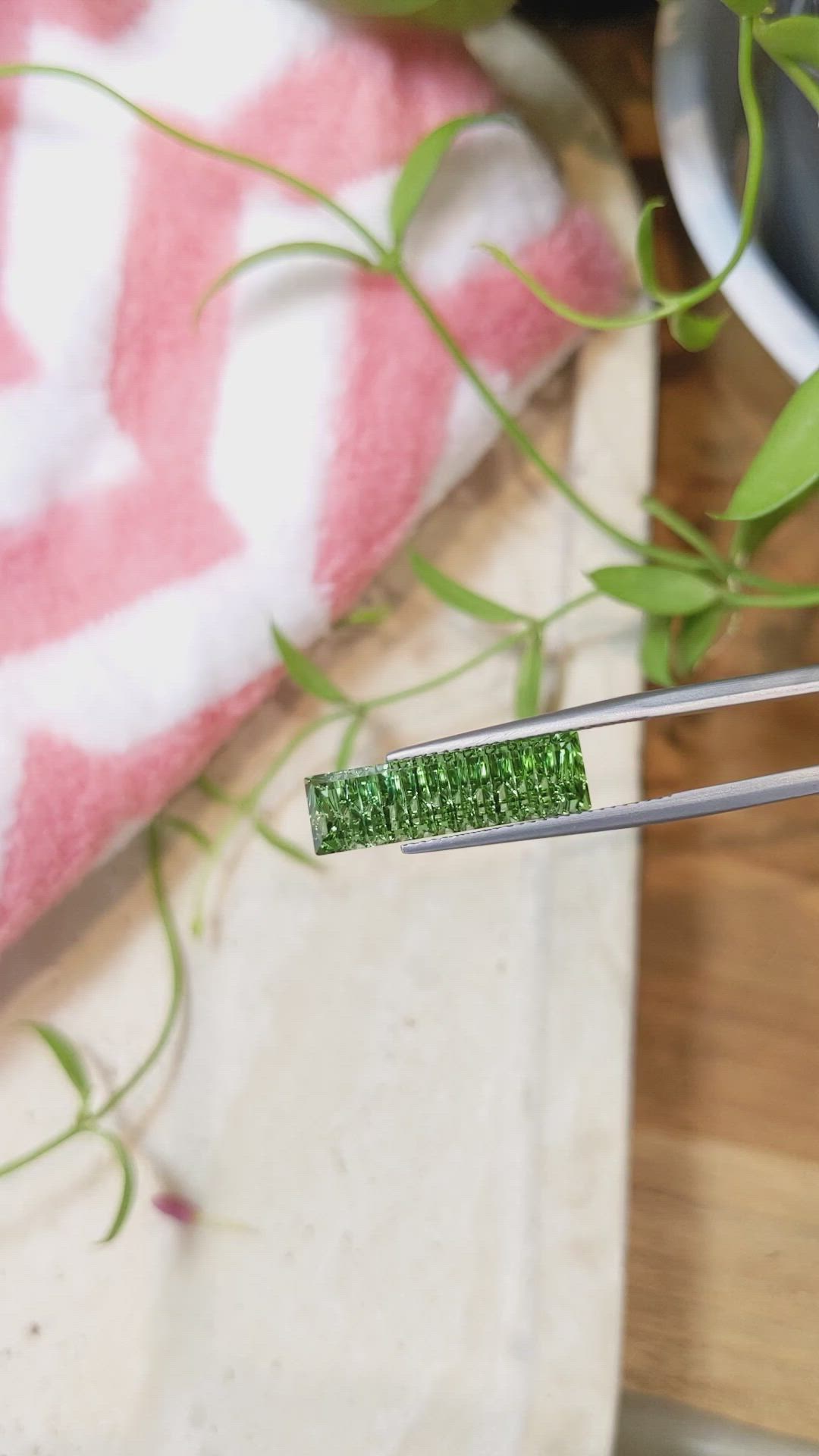



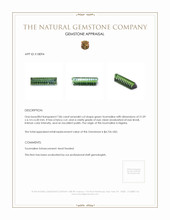
7.86 Ct. Tourmaline from Nigeria
This loose stone is available to ship now
Item ID: | K18094 |
|---|---|
Dimensions (MM): help | Length: 21.09 Width: 6.14 Height: 6.5 |
Weight: | 7.86 Ct. |
Color: help | Green |
Color intensity: help | Intense |
Clarity: help | Eye Clean |
Shape: help | Emerald Cut |
Cut: | Fancy Cut |
Cutting style: | Faceted |
Enhancements: help | Heat Treated |
Origin: help | Nigeria |
Per carat price: help | $601 |
This listing describes a single natural green tourmaline of notable size and quality, offered by The Natural Gemstone Company. The specimen weighs 7.86 carats, and it is fashioned in an emerald cut shape with overall dimensions of 21.09 millimeters by 6.14 millimeters by 6.50 millimeters. The cutter executed a fancy cut that emphasizes linear facets along the pavilion, creating a refined columnar visual character when viewed face up. Clarity is graded as eye clean evaluated at eye level, which indicates absence of inclusions visible to the unaided eye under normal viewing conditions. Color is assessed as intense, presenting a saturated green that remains vivid across the table and through the pavilion, and the polish is rated excellent, contributing to crisp facet junctions and even light return. The material has been heat treated to enhance color uniformity, and the documented origin is Nigeria.
Visual and material attributes of this tourmaline merit close attention for both gemmological and jewelry design considerations. The emerald style outline imparts an elegant, elongated profile that plays well in linear settings such as bar rings, channel set bracelets, or bespoke pendant designs. The fancy pavilion faceting produces repeated internal reflections that animate the stone along its length, lending the piece a subtle parade of light and color that is both structured and lively. Because the gem is transparent and eye clean, light transmission is excellent, and the intense green remains consistent whether the stone is held at standard viewing angles or oriented for display. The excellent polish supports a clean surface appearance, reducing diffusion and allowing the stone to show sharp facet contrast and defined windows into the crystal. The overall effect is a refined gem that balances size, clarity, and color for high impact in tailored settings.
From a durability and handling perspective the material performs well with common jewelry use, while still requiring appropriate care. Hardness on the Mohs scale is approximately seven to seven and a half, which provides reasonable resistance to abrasion, yet the stone can be scratched by harder materials, and it will benefit from protective settings when used in rings intended for everyday wear. Thermal sensitivity is modest, and customary heat treatment has been applied to enhance the green tone, a standard practice that is stable under normal wearing conditions. Because the gem originates in a depositional environment in Nigeria, its crystal habit and internal features reflect natural growth patterns specific to that geographical provenance, and these microscopic signatures can be important for identification and for buyers who require traceable origin data. Routine cleaning with warm soapy water and a soft brush will maintain surface luster, and professional inspection is recommended if the stone is subjected to any repair work or re mounting.
When comparing this natural tourmaline to lab grown gemstones, there are distinct considerations that inform choice. Lab grown gemstones can offer uniformity of color and consistency of clarity at competitive price points, and they are manufactured under controlled conditions to achieve predictable optical properties. Natural stones however offer a range of attributes that are not replicable by synthesis, and those differences are evident in provenance, rarity, and individual character. Natural tourmalines exhibit growth features and subtle variations in color zoning and inclusions that create unique visual personality and depth, qualities that many collectors and makers of bespoke jewelry specifically seek. The fact of natural formation imparts an element of geological history and a connection to place, which is distinct from a laboratory origin. In addition, certain markets and clients place higher long term value on natural stones, owing to their scarcity and to the role of documented origin in establishing market differentiation. Heat treatment is an accepted enhancement for both natural and some lab grown materials, yet natural stones retain their status as products of geological processes, and they often form the centerpiece of artisanal and heritage pieces where authenticity of natural origin is paramount.
Practical recommendations for use and documentation are provided to assist in appropriate selection and integration into finished work. The elongated emerald profile of this 7.86 carat green tourmaline lends itself to horizontal and vertical bezel or channel settings that protect the girdle while showcasing linear facets, and the excellent polish supports high contrast metal work in white or yellow tones. For clients concerned with provenance or authenticity, The Natural Gemstone Company will provide detailed material information including weight, dimensions, enhancement disclosure, and origin, and we can advise on independent grading options if formal certification is desired. Care guidance, mounting recommendations, and photographic documentation are available on request to support design and appraisal processes. This natural Nigerian tourmaline represents a specimen where significant carat weight, intense color, controlled clarity, and careful cutting converge, offering a material that is well suited to refined custom jewelry projects and to collectors seeking stones with distinct natural character.






